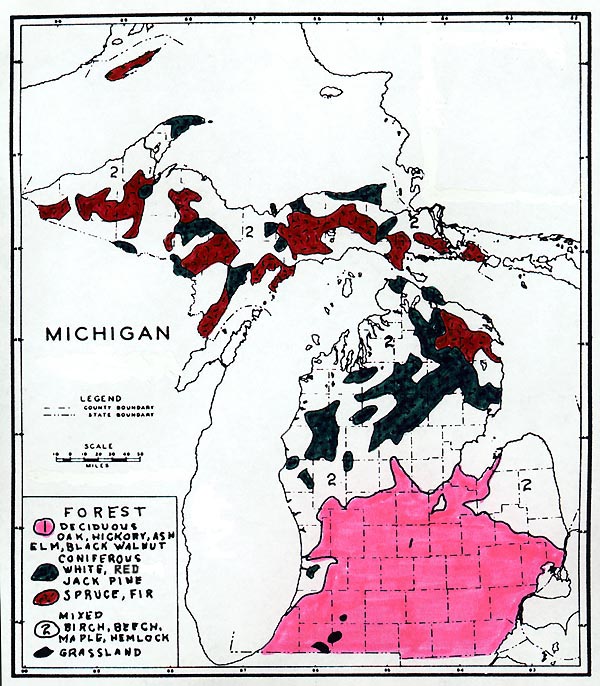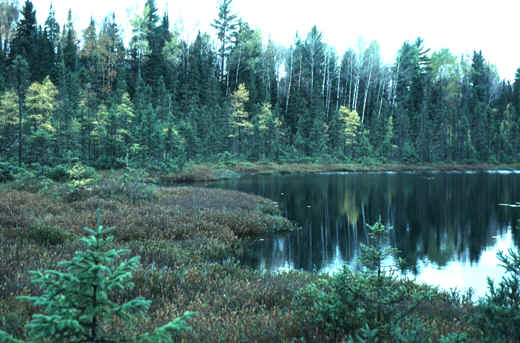BOGS AND SWAMPS
Wetlands in the southern Lower Peninsula harbor a variety of species. The floodplain
forests are often dominated by elm (although Dutch elm disease has decimated that
species), green and black ash, and red and sugar maple. Upland wetlands (former glacial
lakebeds) frequently support ash, red maple, pin and swamp white oak, whereas acidic,
boggy sites may contain boreal flora that persist in this area as outliers (remnant
populations dating back to Ice Age climates) of the Canadian forest. Black spruce, larch
(tamarack), red maple, several evergreen shrubs, and locally rare herbaceous plants may
grow on a mat of partially decomposed sphagnum moss.

Source: Unknown
About 1/8 of Michigan is wetlands dominated by high water tables and bog or swamp
vegetation. Many of these sites are important groundwater-recharge sites. This site, near
Cadillac, is a bog dominated by sphagnum mosses, and is very acidic. As the mosses and
other organic materials gradually fill in the bog, trees try to gain a foothold at its
edges.
Many bogs and swamps form on wet, poorly-drained landscapes, such as the one shown below.
Wetlands in the northern Lower Peninsula are more often dominated by bog vegetation
than in the southern areas. Extensive black spruce-alder-northern white cedar stands may
develop and in some local areas give a strongly boreal appearance to the landscape.
Source:
Photograph by Randy Schaetzl, Professor of Geography - Michigan State University
Others form as lakes fill in with fringing vegetation.

Source:
Photograph by Randy Schaetzl, Professor of Geography - Michigan State University
Beech-maple stands, along with scattered white and red pines are common in the eastern UP.
However, this region differs from the western Upper Peninsula in that the wetlands cover a
far greater proportion of the landscape. Large, flat tracts of glacial outwash or lake beds have permitted the development of extensive
bogs, and these lend a remarkably boreal aspect to parts of the landscape-the Seney Wildlife Refuge in Schoolcraft County contains some
splendid examples. Black spruce and jack pine, with varying amounts of larch, dominate the
more acidic sites, and northern white cedar is found on wetlands that have slightly
more-mineralized groundwater.
This material has been compiled for educational use only, and may not be reproduced without permission. One copy may be printed for personal use. Please contact Randall Schaetzl (soils@msu.edu) for more information or permissions.